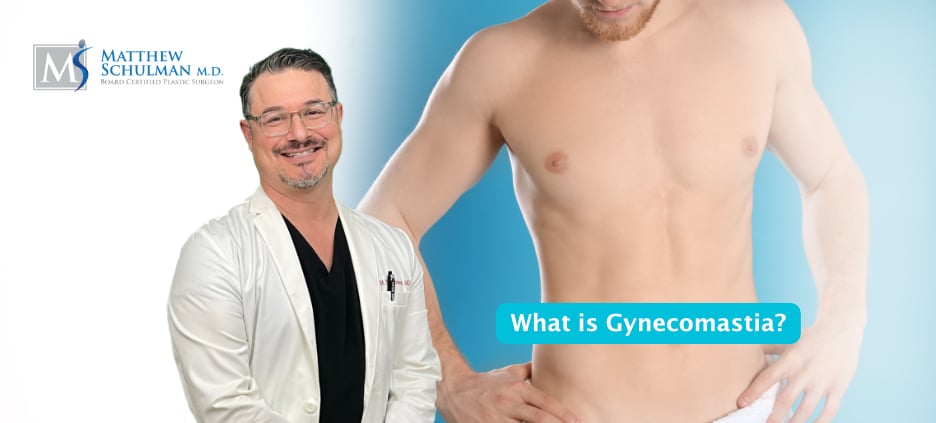A procedure that is growing in popularity is the Gynecomastia in NYC. Many men are self-conscious of their chests. They feel like their chests are too big and resemble small breasts. This can be a significant source of anxiety for them, especially if they are young men or teens. Breast tissue growth is not something young men want to see on their bodies. It is not uncommon for men who suffer breast enlargement to avoid taking their shirts off in public.
This causes them to avoid situations like going to the beach or pools, or changing in a locker room. Men who suffer from enlarges chests often wear baggy shirts, or even multiple layers of shirts to cover themselves up.
What is Gynecomastia?
Gynecomastia, is the enlargement or swelling of breast tissue in males. This undesired breast enlargement can be startling. Gynecomastia can be present in one or both breasts. Both males and females have breast tissue. Females, obviously have more, but in some males, the breast tissue can grow, and with this breast enlargement it can give the appearance of small breasts. In fact, reports indicate that pubertal gynecomastia can be seen in up to 80% of young adolescent boys.
This is likely the result of some hormonal changes and issues in the pituitary gland. Most of the time, the breast tissue in one or more breasts shrinks as hormones continue to change during puberty and male hormones like testosterone increase.
What Causes Gynecomastia
There are several causes for this breast enlargement on the male chest. The vast majority of cases are just simply normal hormonal changes of development that cause gynecomastia and unwanted breast growth. These hormonal changes are common during three phases of a male’s life: just after birth, during puberty, and later in life. Early in life, as a baby, there are high amounts of female hormones (estrogen) in the body, and this is from the mother. This is why newborn male babies often have puffy breast tissue.
This shrinks as the mother’s estrogen is naturally removed from the body. Again, male chest enlargement can occur during puberty as the normal hormones are changing and regulating themselves. This can cause gynecomastia. As males age, testosterone levels tend to drop. So men between the ages of 50-80 also commonly experience chest enlargement. This is a common reason that many develop gynecomastia.
Normal hormonal changes are by far the most common reason for male chest enlargement, but other things may cause gynecomastia as well, some other less common causes include:
- obesity
- liver or kidney disease
- tumors (testicular cancer, breast cancer)
- prescription medications (for hair loss, anxiety, depression, bipolar disorder, acid reflux)
- alcohol
- marijuana
- anabolic steroids
- calcium channel blockers
What to do if you have Gynecomastia:
If you suffer with gynecomastia, the first thing you should do is visit your doctor. Talk to them about your unwanted breast growth. He or she will examine you and take a detailed history. They will also likely do some routine blood tests. You will be able to get your gynecomastia diagnosed properly. This will help them determine the cause for your gynecomastia and help develop a surgical treatment plan.
Treatment for Gynecomastia:

However, since the majority of cases of gynecomastia have no identifiable cause, the treatment would be surgical correction of the chest enlargement. This would also be true if the cause of the chest enlargement was treated, but the enlargement still remained.
Surgical Correction of Gynecomastia:
The first step is an evaluation by a Board Certified Plastic Surgeon, experienced in a male chest reduction procedure. During your evaluation, your surgeon will take your medical history and perform a physical examination. He or she will specifically examine your chest, looking carefully at the amount of excess skin, the quality of that skin, underlying breast tissue, and signs of asymmetry.
Your surgeon will also review your medical evaluation to make sure there is no underlying cause that should be addressed before or after surgery. Your plastic surgeon will also discuss the required incisions and resulting scars for your chest reduction.
These incisions in the male breast tissue will depend on exactly what needs to be done for you and whether you require only breast tissue removal or also some skin removal. In general, if you are young, you likely only require removal of the underlying breast tissue that has enlarged. If you are older, or obese, you may also require some extra skin removal which would require additional incisions and scarring. Your plastic surgeon will be able to discuss with you which surgical approach is best.
Breast Tissue Removal:
The removal of male breast tissue can be done either using liposuction or making a small incision and directly removing the densest part of the breast gland. When liposuction is performed, it can be done through tiny hidden punctures on the chest. These puncture holes are very tiny and often require no more than a single stitch. This is a good technique for removing the majority of breast tissue. However, breast tissue can be very dense, especially directly under the nipple.
This is why is is common to also make a small incision around the areola to directly pluck out the thick gland. If this incision needs to be made, it is small and well-hidden around the edge of the areola.
Skin Removal:
In cases of excess skin, the skin would need to be removed as well, in order to get the best results. This is most common if you are overweight or have lost a lot of weight, or if you are older and have normal skin laxity that comes with aging. Sometimes the skin can be removed from just around the areola. Other times, more incisions need to be made down the chest or in the breast fold.
Where is the Procedure Performed?
A chest reduction is a surgical procedure that needs to be performed in an accredited surgery center or hospital. These are regulated facilities with the appropriate safety standards and appropriately trained staff. The procedure is usually performed using intravenous sedation or general anesthesia.
It is usually an out-patient procedure, meaning you are able to go home the same day. In situations where other procedures are being done at the same time, you may be required to stay overnight for monitoring.
Gynecomastia Recovery
What’s in store for me during my recovery from gynecomastia surgery? After a few hours in the recovery room, you will be discharged home. You will have pain medication and antibiotics. This procedure is very well tolerated and the pain is significantly less than with other procedures like a tummy tuck. You will wear a chest compression garment.
After about a week, most people feel pretty good and you will be cleared to return to normal activities, including work and school. You will be restricted from heavy exercise for about 3-4 weeks while you are healing. It may take several months for swelling to go away and your appearance will improve during this time.
Questions and Answers
Can gynecomastia go away?
Pubertal gynecomastia often self-resolves, but persists in 20% of adults. For severe cases, tamoxifen therapy may be considered. In men, gynecomastia can stem from health issues or medication use.
How to fix gynecomastia?
The procedure to eliminate breast tissue typically comprises liposuction to remove excess fat and surgical excision of surplus glandular breast tissue through an incision near the nipple-areolar complex, with skin removal for larger male breasts if necessary.
Is gynecomastia a serious problem?
Gynecomastia can occur naturally in newborns, pubescent boys, and older men due to hormonal fluctuations. While often not a severe issue, it can be emotionally challenging to deal with. It is important to remember that in rare cases breast cancer can also be found in patients with gynecomastia. In other cases the culprit can appear as estrogen excess. It is also important to note that gynecomastia has been known to appear in men who are receiving certain treatments for prostate cancer.
Will increasing testosterone reduce gynecomastia?
While a higher testosterone-to-estrogen ratio can aid in gynecomastia prevention, using testosterone replacement therapy (TRT) to boost testosterone might inadvertently elevate estrogen levels, potentially causing gynecomastia as a side effect.
Recurrence of your chest enlargement
In general, this surgical procedure will permanently correct your chest enlargement. However, if your chest enlargement is due to things like recreational drug use or prescription medications, and you continue to use those things, then certainly your chest enlargement may recur. In some cases, chest enlargement may come back, simply because it is just way your body is programmed.
If you would like to learn more about reducing your male chest and correcting your gynecomastia, contact New York City Board Certified Plastic Surgeon, Dr. Matthew Schulman. During your consultation, you can find out if a male chest reduction is right for your and specifically which surgical technique is most appropriate.
References
https://www.mayoclinic.org/diseases-conditions/gynecomastia/symptoms-causes/syc-20351793




